’The Nature of Motion’: ten designers interpret mobility for Nike at Salone
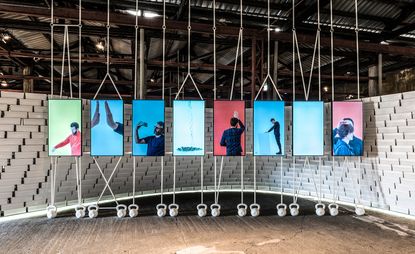
Nike's vice president of global design, John Hoke, recently gave ten progressive designers – including Sebastian Wrong, Max Lamb, Martino Gamper, Greg Lynn and Lindsey Adelman – a simple brief: 'To help explore and abstract, question and challenge the notion of mobility, motion and movement.'
After working closely with a creative, collaborative team of people 'who could challenge us and vice-versa', Nike is now exhibiting the results of its 'The Nature of Motion' project in Milan as part of Salone del Mobile 2016. 'Each piece is a unique exploration, a piece of poetry expressed either by form and surface, scale, equilibrium, the nature of gravity or rhythm, how the body reacts to heat and cool,' says Hoke. Any materials were allowed – and any medium of expression permitted.
British furniture designer Max Lamb has contributed the brutal surreality of an installation made up of super heavy aluminium, granite and polystyrene blocks levitating above an invisible skirt of compressed air. The air enables each apparently immovable object to glide across a white rink at the lightest touch, challenging our perceptions of weight, effort and movement.
Best known for his lighting, British designer and creative director Sebastian Wrong conceived an ergonomic chair formation, intended as communal seating for team sport. A longstanding champion of the futurist art movement, Wrong was inspired by Umberto Boccioni’s 1913 painting Dynamism of a Soccer Player, abstracting the colours, movement and dynamics of the canvas on to Nike's Flyknit textile which he wrapped around a hollow, hexagonal steel frame. 'When we went to Nike’s HQ in Oregon to talk about the projects, they referred to us as "artists", not designers, and this made me think, I don’t have to deliver a practical solution here... I can be indulgent!' explains Wrong. 'Ironically, I went on to produce one of the more functional exhibits. It’s a "sling thing" made of weather-proof fabric, designed for sports teams to rest on before or after a game. The construction is very simple so it can packed down to nothing and easily adapted to a single chair design.'
Viewed from above, Wrong’s energetic interpretation of Boccioni’s soccer artwork provides a goal mouth scramble of swirling colour. 'The futurist manifesto was all about noise, action, agitation, intervention. I tried to get a bit of that energy in this piece also.'
Inspiration for Martino Gamper’s contribution to 'The Nature of Motion' came from the unlikely source of veteran rock drummer Ginger Baker. Gamper watched a documentary about the legendary Cream drummer (2012's Beware of Mr Baker) and also saw the 76 year old percussive genius play live. 'He can’t walk any more but he can still drum!' says Gamper.
When asked to contribute to Nike’s project, Gamper decided on a collection of drums and drum kits that creates a commentary on the rhythm of 'natural motion' by combining technical Flyknit textiles and Nike laces with laminated plywood forms. 'I was thinking of the Rio Olympics, the drums of the carnival,' says Gamper, striking a nearby snare with a blue stick. 'We made special weaves of Nike Flyknit material with areas of different densities and colour, like you see on steel drums. We stretched the fabric over the drums as skins.' A professional drummer will be behind Gamper’s kit when the exhibition opens officially today.
Dutch designer Bertjan Pot’s work is propelled by an impulsive curiosity concerning materials, techniques, structures, patterns and colours that leads him to push conventional manufacturing boundaries and experiment with textile and weaving techniques. Rotterdam-based Pot’s series of resting pods takes the notion of the wheel – a symbol of momentum and movement – as a structural starting point.
By upholstering the inner tubes of a car, wheelbarrow, truck and tractor with ropes, Nike laces and belts, he has initiated an unexpected but effective meeting of artisanal hand-weaving techniques and high-performance materials. “The first idea was: Nike makes you tired. Nike wants you to participate in sport,' says Pot. 'Nike wants you to come to Milan, walk around all day and look at their exhibition. So how about I create something that encourages rest and relaxation instead of activity.'
Pot did the labour on the Polynesian/Indonesian-influenced, basket-woven pieces himself, sometimes with the help of a single assistant. 'Thirty-two days of weaving! Most pieces are made of just three or four lengths of continuous fibre wrapped around each tyre or tube. For the bigger pieces I would stand inside the tyre passing the roll of material up and over, back and forth, inside and out to my intern.' There's art in action at 'The Nature of Motion'.
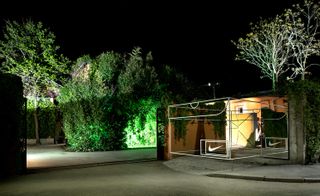
Nike gave ten progressive designers a simple brief: ’To help explore and abstract, question and challenge the notion of mobility, motion and movement’. Pictured: entrance way to the show
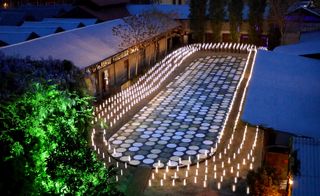
The featured designers include Sebastian Wrong, Max Lamb, Martino Gamper, Greg Lynn and Lindsey Adelman. Pictured: outside the show
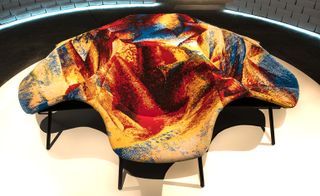
British designer and creative director Sebastian Wrong conceived an ergonomic chair formation (pictured), intended as communal seating for team sport
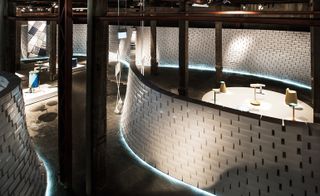
Swedish graphic designer Clara von Zweigbergk and American product designer Shane Schneck present their collection of seating, as seen here from around the shoebox wall. The combination of materials is similar to that of a shoe: a cork base acts as the ’sole’, providing grip and weight, while a medium-density polyurethane top provides a softer area for the seat
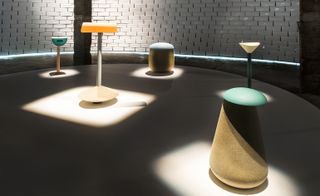
The duo’s collection studies the interplay of balance and posture – specifically how the human body interacts with static objects. Each stool requires its sitter’s cognitive engagement to balance
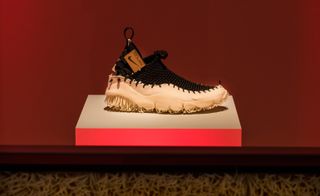
Pictured: the ’Sensation room’ (detail)
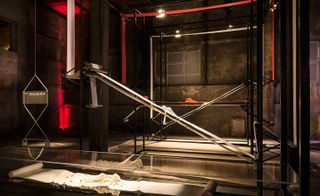
Pictured: ’Experiments’, in installation

Rotterdam-based Bertjan Pot’s series of resting pods (pictured) takes the notion of the wheel – a symbol of momentum and movement – as a structural starting point
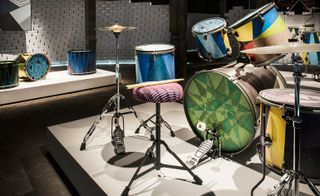
Martino Gamper’s project (pictured) comprises a collection of drums that comment on the rhythm of ’natural motion’ by stretching technical Nike Flyknit textiles over laminated plywood forms and securing them with Nike laces
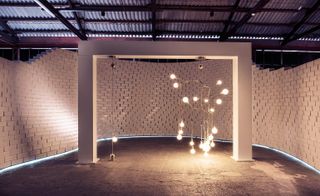
Lindsey Adelman’s project (pictured) comprises two light fixtures that communicate through vibrational movement in an effort to capture the ’motion of nature’ within the constraints of industrial components
INFORMATION
’The Nature of Motion’ is on view until 17 April. For more information, visit Nike’s website
ADDRESS
Via Orobia 15
20139, Milan
Wallpaper* Newsletter
Receive our daily digest of inspiration, escapism and design stories from around the world direct to your inbox
-
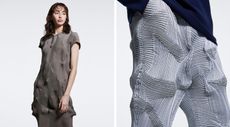 Get to know Issey Miyake’s innovative A-POC ABLE line as it arrives in the UK
Get to know Issey Miyake’s innovative A-POC ABLE line as it arrives in the UKAs A-POC ABLE Issey Miyake launches in London this week, designer Yoshiyuki Miyamae gives Wallpaper* the lowdown on the experimental Issey Miyake offshoot
By Jack Moss Published
-
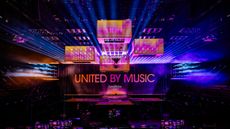 Eurovision unveils its 2024 stage, designed by Beyoncé's Renaissance Tour creatives
Eurovision unveils its 2024 stage, designed by Beyoncé's Renaissance Tour creativesThis year's stage design aims to bring the audience into the performance more than ever before.
By Charlotte Gunn Published
-
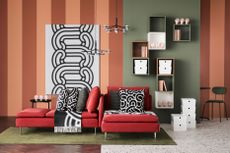 Ikea meets Japan in this new pattern-filled collection
Ikea meets Japan in this new pattern-filled collectionNew Ikea Sötrönn collection by Japanese artist Hiroko Takahashi brings Japan and Scandinavia together in a pattern-filled, joyful range for the home
By Rosa Bertoli Published
-
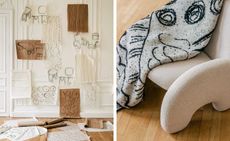 Faye Toogood brings new life to Matisse’s legacy
Faye Toogood brings new life to Matisse’s legacyMilan Design Week 2023: tapped by Maison Matisse, the London-based designer has taken inspiration from the French master’s forms to create a collection of heirloom-worthy objects
By Sam Rogers Published
-
 Prada Frames 2023: Milan programme announced
Prada Frames 2023: Milan programme announcedProgramme announced for Prada Frames 2023 at Milan Design Week, the annual symposium curated by Formafantasma at Luigi Caccia Dominioni's Teatro Filodrammatici from 17 to 19 April
By Rosa Bertoli Last updated
-
 Alessi Occasional Objects: Virgil Abloh’s take on cutlery
Alessi Occasional Objects: Virgil Abloh’s take on cutleryBest Cross Pollination: Alessi's cutlery by the late designer Virgil Abloh, in collaboration with his London studio Alaska Alaska, is awarded at the Wallpaper* Design Awards 2023
By Rosa Bertoli Published
-
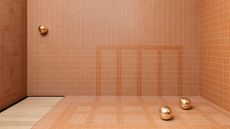 Salone del Mobile 2023: highlights from Milan Design Week
Salone del Mobile 2023: highlights from Milan Design WeekIn pictures: our highlights from Milan Design Week, held during the 61st Salone del Mobile 2023 (18-23 April)
By Rosa Bertoli Last updated
-
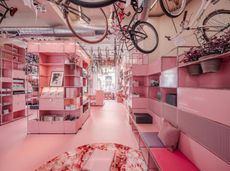 USM launches blushing pink limited edition of its modular furniture
USM launches blushing pink limited edition of its modular furnitureFollowing an installation during Milan Design Week 2022, USM launches a new pink limited edition of its Haller range
By Rosa Bertoli Last updated
-
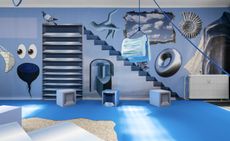 ‘You don't want space; you want to fill it’: Milan exhibition
‘You don't want space; you want to fill it’: Milan exhibitionMaking its debut during Milan Design Week 2022 at Marsèll Paradise, a new exhibition by Matylda Krzykowski, explores how we approach the space we live in (until 15 July 2022)
By Cristina Kiran Piotti Last updated
-
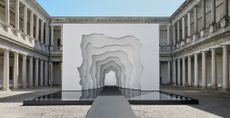 Kohler and Daniel Arsham brought experiential art to Milan Design Week
Kohler and Daniel Arsham brought experiential art to Milan Design WeekLooking back on Daniel Arsham and Kohler’s Divided Layers installation, and the brand’s latest bathroom collection
By Simon Mills Last updated
-
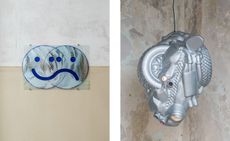 Men’s mental health takes centre stage at an art and design exhibition by Tableau
Men’s mental health takes centre stage at an art and design exhibition by Tableau‘Confessions’, which travels to Copenhagen’s 3 Days of Design following its debut at Milan Design Week 2022, features commissioned work by 14 male artists, designers and architects, reflecting on toxic masculinity, vulnerability and mental health
By TF Chan Last updated